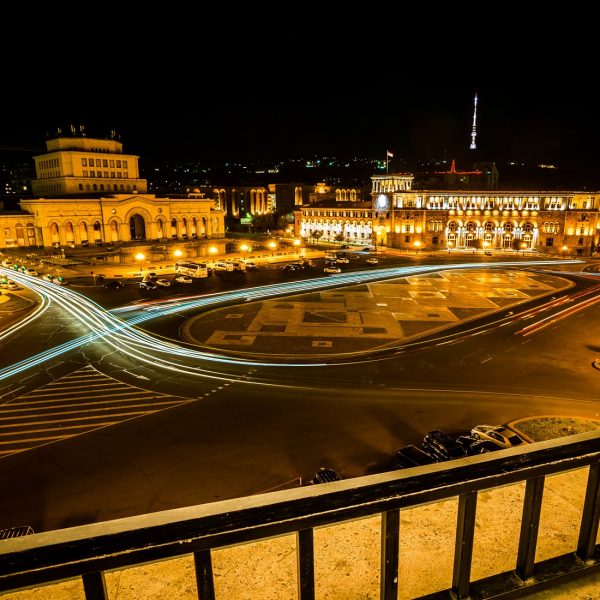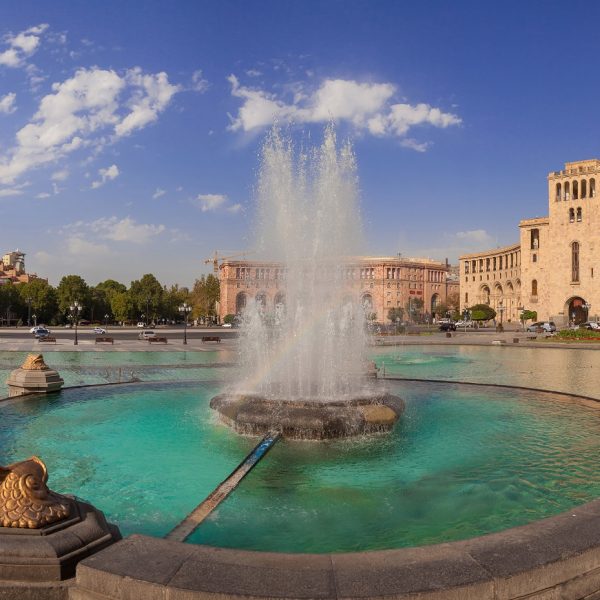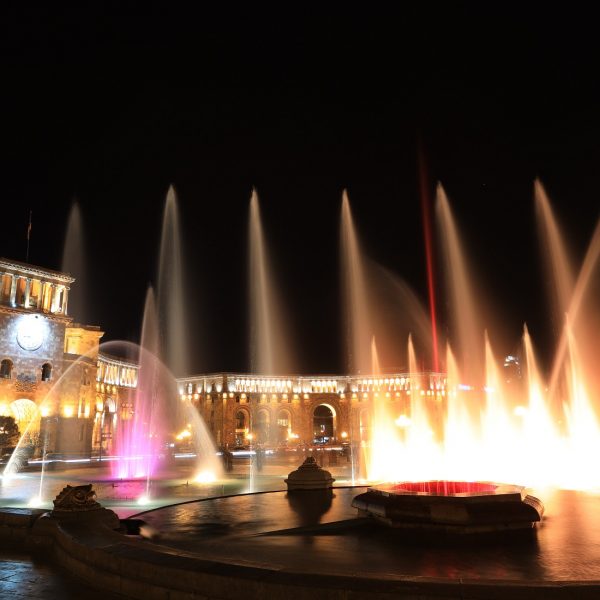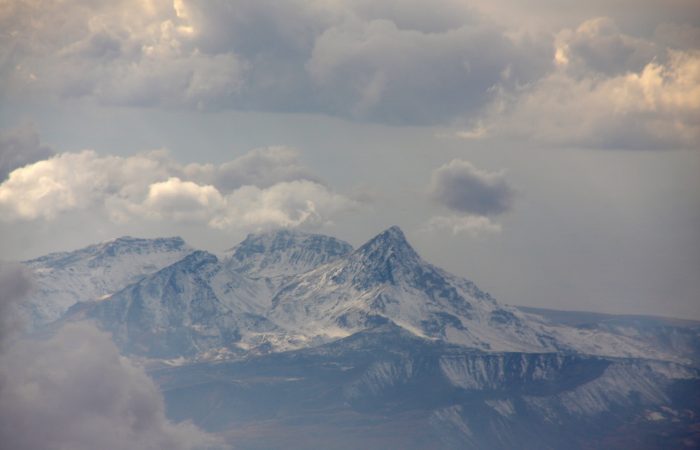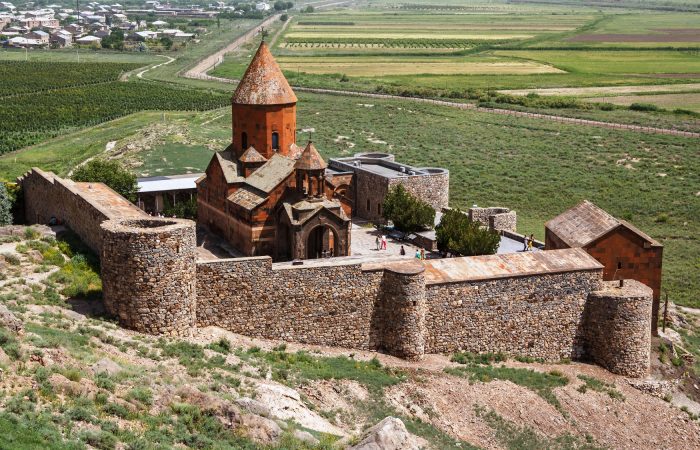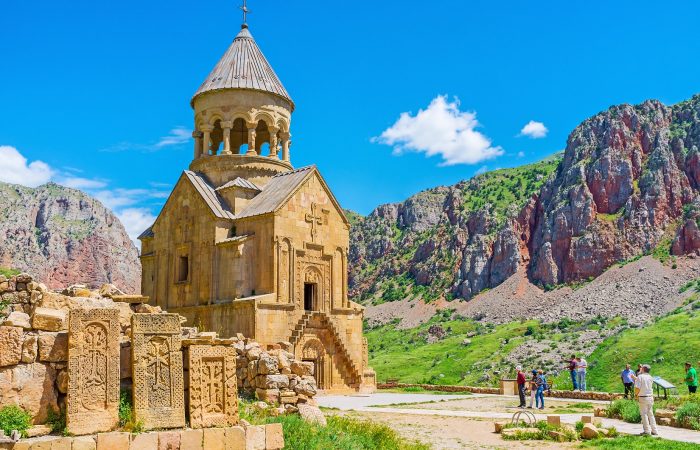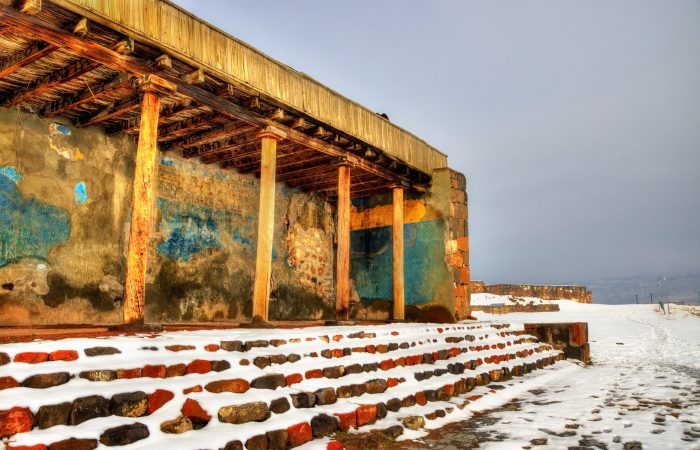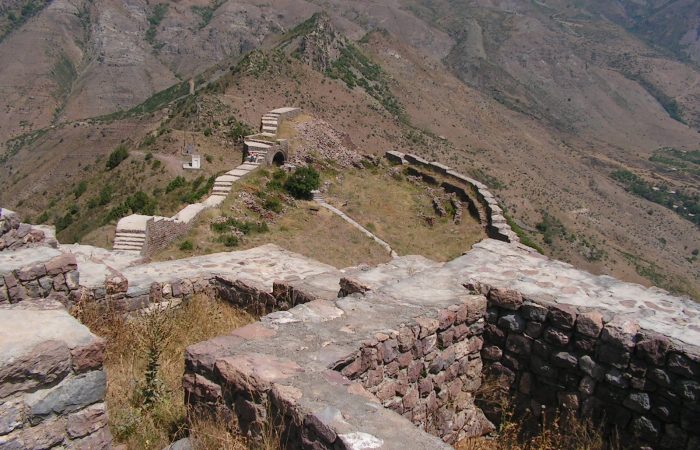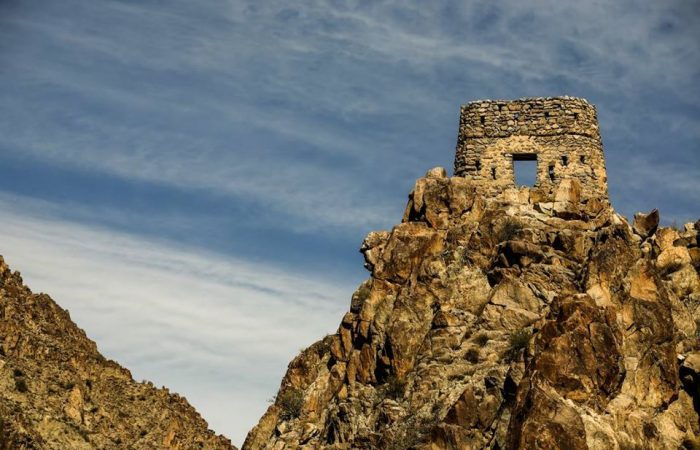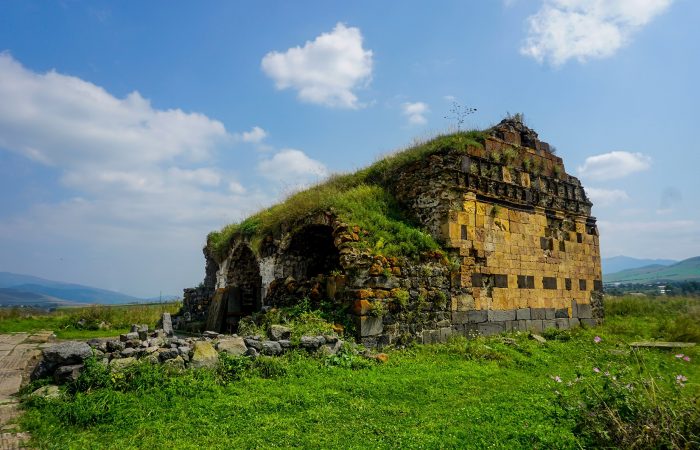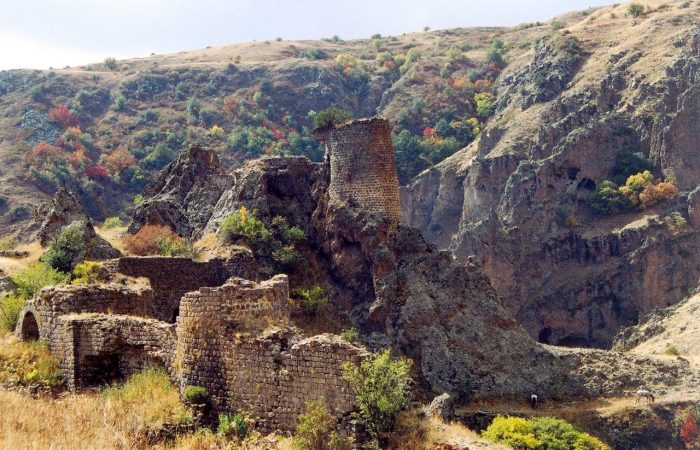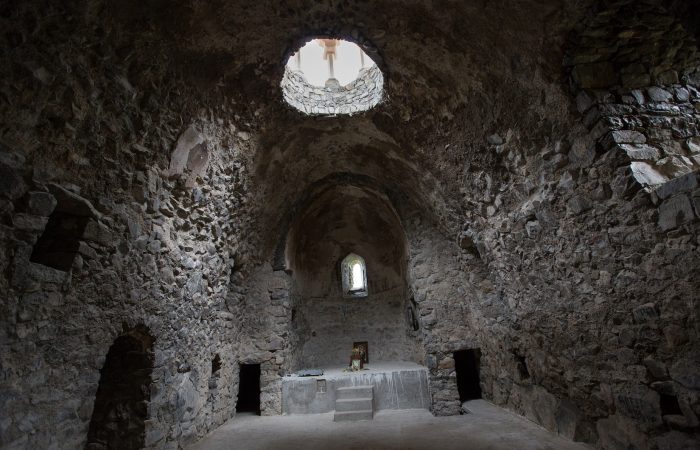Republic Square Early History
The Soviet Union period was a reconstruction era for all Soviet Union countries. Armenia was no exception. The plan to rebuild the square was brought forth in 1926 and was further developed until 1952. The chief architect was Alexander Tamanyan (1878-1936), who had moved to Yerevan from Petrograd after the revolution.
The first plan of rebuilding Yerevan was drawn in 1924 and special attention was paid to the square. Though most of Tamanyan’s ideas were considered extreme and impossible to be realized, the square was built. Every leaning house, restaurant and bath was demolished and replaced by new buildings. These buildings represented a combination of national style and the best of world architecture.
As already said, the square was formerly known as Lenin square. It’s due to the fact that there once stood the statue of Lenin, who was a Russian Marxist revolutionary, intellectual and politician who led the October Revolution of 1917. The statue was sculpted by prominent Soviet artist Sergei Merkurov. It was placed on the southern part of the oval square. The statue’s hand was slightly stretched forward, which gave the feel of purpose and movement as if making a step to the future.
The statue was unveiled on November 29, 1940, that is on the 20th anniversary of the Soviet Armenia. It rose on a pedestal made of polished granite. It was designed by architects Natalia Peremuzova and Levon Vartanov. On the whole, this statue was considered one of the best Lenin statues due to the detailed work and the location, which provided good lighting to the statue at any time of the day.
The statue cannot be found there anymore. After Armenia regained its independence, the statue was removed, unfortunately the pedestal as well. It now lies in the courtyard of the National History Museum. Upon request visitors might be shown it. Presently, on the place where there once used to be the statue of Lenin is a large TV screen.
Republic Square Architectural Style
In general, city squares are built in various ways. Some squares are designed by one architect and feature only one style (La Place des Vogueses in Paris by Claude de Chastillon), while others might be built over several decades, which means that not only the architects are different but also the styles incorporated greatly vary. An example of the latter, are for example, Saint Mark’s square in Venice or Palace Square in Leningrad.
The Republic Square, which covers 14,000 square meters, comes with a unified architectural style.
Buildings Around Republic Square
The square is surrounded by seven major buildings:
- The National Gallery and the History Museum building (north) – The National Gallery contains over 25,000 painting samples of Armenian, Russian and European artists. The History Museum of Armenia includes over 400,000 items and pieces of Armenian heritage.
- The Ministry of Territorial Administration (north-east).
- The Government House (north-east) – It holds the main offices of the Government of Armenia. To design the Government House Tamanyan studied ancient Armenian architecture. And he did a great job having created a national work of art bearing the influence of subsequent Armenian town planning.
- The Central post-office of the Republic of Armenia (south-east) – Offers telegraph, long-distance phone calls, money exchange, postcards for purchase, sending and receiving packages.
- The “Mariott Armenia” hotel (south-west) – Armenia Marriott Hotel is currently the only internationally managed hotel in Yerevan.
- The Ministry of Foreign Affairs (north-west).
- The Ministry of Energy and Natural Resources (north-west).
The buildings are mainly made of Armenian rose tufa. as you enter the square, the large clock placed on the Government building captures attention. It was made in Moscow and brought to Yerevan in July 1941. It comes at the diameter of 4 meters (around 13 feet). The big hand 188 cm (6 feet) long, and the small hand is 170 cm (5 feet).
Republic Square Singing Fountains
The Republic Square gets especially crowdy in the evenings, particularly within the period between early spring and late fall. It’s during this time period that the singing fountains, initially designed by engineer and scientist Abram Abramyan, operate and perform a light show right in front of the Art Gallery and History Museum. The program features classical music, contemporary jazz, pop and rock.
The Show usually starts at 9 pm or 10 pm and lasts until 11 pm. Both the fountains and their colors change according to the rhythm of the song or the music played. The water streams, in their turn, change their shapes. The show is really entertaining and absolutely worth to be visited.
The fountains were renovated in 2007. And now they feature computer-controlled water displays.
As a significant place for all Armenians and a truly interesting and fun tourist destination, the Republic Square should be visited both during daytime and the night-time. Those are two different places offering different views and different emotions and feelings. While nigh-time Republic Square will definitely appear to be more attractive and impressive, it’s only during daytime that you will have a unique opportunity to discover the surrounding buildings, visit the National Museum (by the way, it’s open until 5 pm), get acquainted with the works of Armenian and foreign artists, and of course visit the nearby cafes and shopping centers.
Location
Located in the center of Yerevan The Republic Square is intesrected by Abovyan, Nalbandyan, Tigran Mets Avenue, Vazgen Sargsyan and Amiryan streets.

